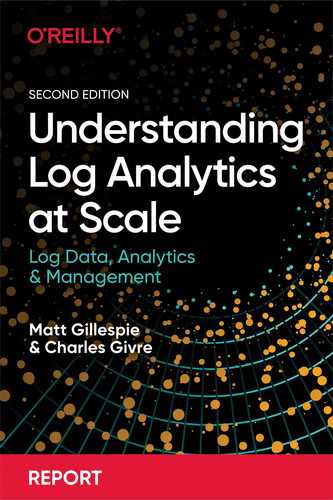Using log analytics provides organizations with powerful and necessary capabilities for IT security. By analyzing log data, you can drive critical business outcomes, such as identifying security threats or opportunities to build new products. Log analytics also helps improve business efficiency, application, infrastructure, and uptime. In the second edition of this report, data architects and IT infrastructure leads will learn how to get up to speed on log data, log analytics, and log management. Log data, the list of recorded events from software and hardware, typically includes the IP address, time of event, date of event, and more. You'll explore how proactively planned data storage and delivery extends enterprise IT capabilities critical to security analytics deployments. With this in-depth report, you'll be able to identify the points your organization needs to consider to achieve successful business outcomes from your log data.
Table of Contents
- 1. Log Analytics
- 2. Log Analytics Use Cases
- 3. Tools for Log Analytics
- 4. Topologies for Enterprise Storage Architecture
- 5. The Role of Object Stores for Log Data
- 6. Performance Implications of Storage Architecture
- 7. Enabling Log Data’s Strategic Value with a Unified Fast File and Object Platform
- 8. Nine Guideposts for Log Analytics Planning
- Guidepost 1: What Are the Trends for Ingest Rates?
- Guidepost 2: How Long Does Log Data Need to Be Retained?
- Guidepost 3: How Will Regulatory Issues Affect Log Analytics?
- Guidepost 4: What Data Sources and Formats Are Involved?
- Guidepost 5: What Role Will Changing Business Realities Have?
- Guidepost 6: What Are the Ongoing Query Requirements?
- Guidepost 7: How Are Data-Management Challenges Addressed?
- Guidepost 8: How Are Data Transformations Handled?
- Guidepost 9: What About Data Protection and High Availability?
- 9. Conclusion
